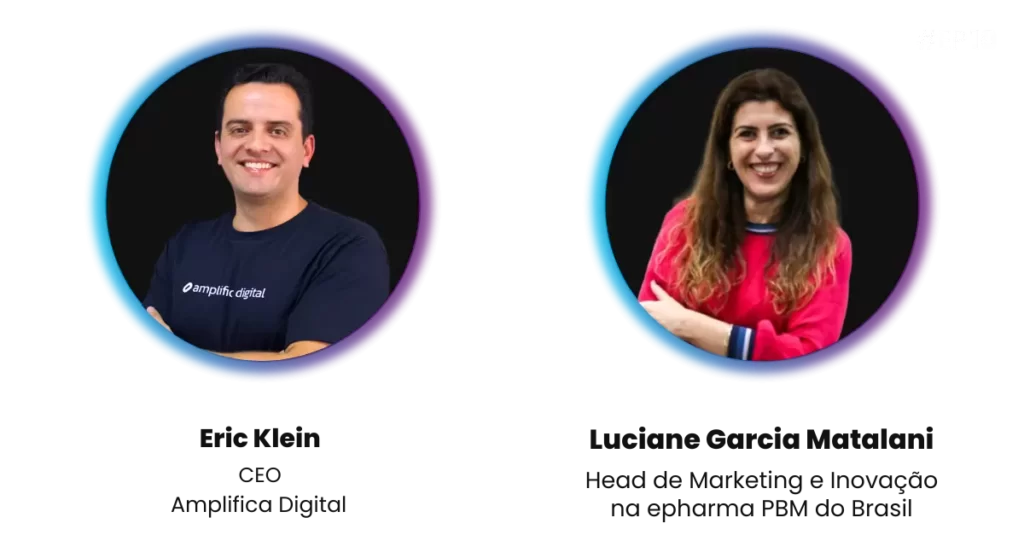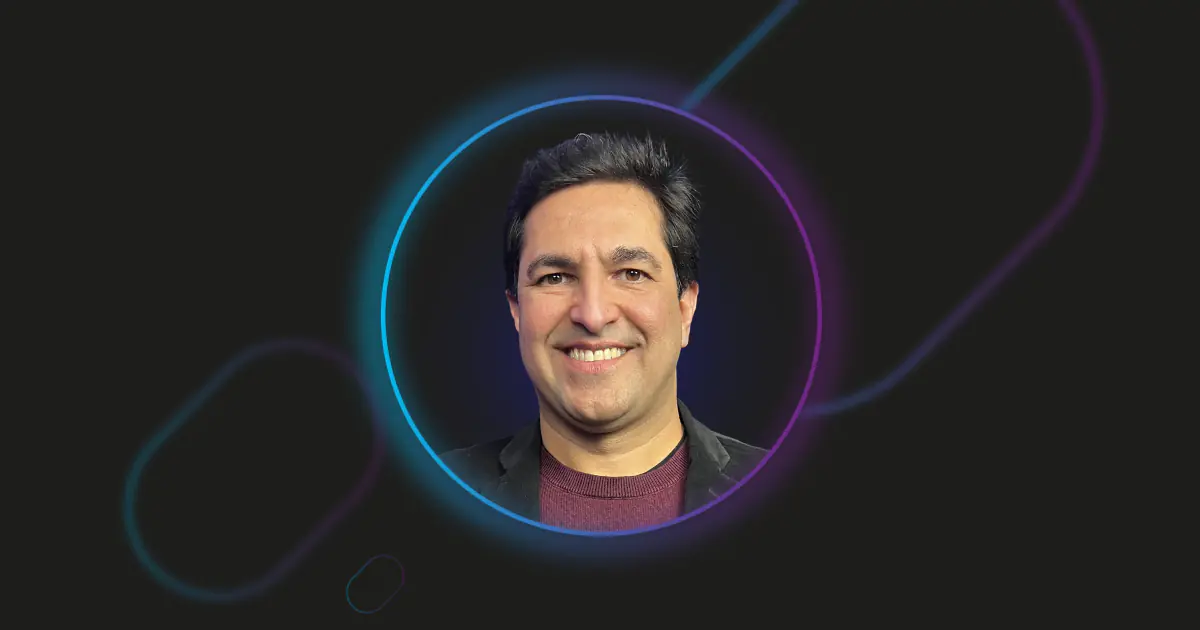Our conversation in this issue #11 of AmplificaCast was with Luciane Matalani, Head of Marketing and Innovation at Epharma PBM do Brasil.
We talk about his trajectory within the pharmaceutical sector and point out important strategies for the B2B segment in the sector.
Always present in B2B, Luciana started in the automotive sector and migrated to pharmaceuticals inspired by Mauro Garcia, her brother, when observing the qualification, training and communication with the target customer: the doctor.
He started at AstraZeneca as a pharmaceutical marketer and then moved on to market intelligence. At this company, in 2004, she discovered what is still new in some industries today, super market segmentation. She completed several projects before moving on to managing new products and new businesses.
He went through companies such as Hospitalar da EMS, Pfizer, Eurofarma, Miralles, Theraskin. Between more generalist companies like Europharma or more targeted like Theraskin. All these experiences led Luciane to Epharma, to “the other side of the business”.
We took advantage of all Luciane's background to clarify some questions about B2B marketing and innovation in health.

Is digital presence important for the health segment?
A digital presence is indispensable, not only in tools like Linkedin to talk to managers and decision-makers. Naturally, there are other social networks like Instagram and Tiktok that are also important in the digital presence, especially if there is any aspect of the business that reaches B2C.
But taking into account much more targeted communication, tools like Google and the Linkedin network are a fundamental part of the B2B presence.
The Epharma page itself is very present on Linkedin as the main network. Always informing external and internal actions, as well as Luciane's own brand with Epharma. Over time it became clear that Linkedin is a source of business that requires frequent digital presence.
Following the most recent trends, we see the movement of the consumer influencing the stakeholder. It's not a movement anymore It is i.e. human to human.
How to translate the strategy into a good marketing plan?
The first step is to reach the right people, to know the tone of voice and the content that your persona wants in each channel that she is present.
It's no use posting the same copy on all networks, or the same content density, it doesn't generate significant results.
Here in Amplifica Digital Last year we did an analysis of the main global technology companies. We noticed that in each social network, global brands behaved differently. While on Instagram the brand was an employer brand, Twitter was more direct and objective, LinkedIn was customer-oriented, and so on.
innovation and strategy
Innovation can come from any area of the company, also from the way of communicating on social networks. There are often other priorities, either due to lack of resources or time, but when we think about innovation, it is worth rethinking certain points within the company, after all, innovation is culture.
The B2B sales cycle has a longer path, it usually goes through a lot more decisions, approvals, etc. With that in mind, it's important to have mapped the prospect's contact points with your brand and who are the decision influencers. To keep the strategic content nurturing that relationship with the lead after converting.
Digital transformation in the healthcare market
In addition to being Head of Marketing & Innovation at Epharma, Luciana is also a shelter leads, with the great mission of integrating the people responsible for the four main squads (division by market niche) to maintain the branding structure throughout the company, the consistency of lead nurturing and make a relationship ruler that works correctly for each type of company.
Between face-to-face and online events and rich content such as the podcast created by Luciane “Oxigenando Ideias para Saúde”, the Epharma follows the ambition to be a protagonist in the digital transformation of the health market. As in a health services company, which works as a link between retail and stakeholders.
Currently, Epharma works on medication benefit management (PBM), where the main goal is access. Access for the right person to the right treatment at the right price at the right time.
What better time to make an offer to a HR manager with a chronic non-communicable disease population such as diabetes, depression, hypertension, anxiety? To answer this question, Epharma works on a specific plan for these conditions so that affected people, for example, do not abandon treatment.
With a focus on personalization, Epharma is willing to provide free drug plans to health operators who want to differentiate themselves, as are the plans launched more recently.
360 engagement
It is important to combine the contents between the event that the person attended and what your company brings to that person from this event.
Combining offline and online strategy, promoting or participating in face-to-face events, which generate leads to continue this relationship on digital. The opposite movement can also happen, from a digital capture, strengthening the face-to-face relationship.
360 engagement is Epharma's contribution to helping industries that really think about access programs, patient support and brand loyalty. This 360 vision is applied to all points of contact that the industry has to have contact with this program.
loyalty technique
A company that launches a loyalty program today has to answer questions like: what is the tactical part and tool that I take to the sales force?
After all, if the sales force doesn't compare the idea, it doesn't get to the doctor. That's why it's essential to make a specific sales force and demand generation strategy.
Then, think of specific materials for physician engagement, clarifying how the company promotes all the benefits that the industry designed within the loyalty plan and access to medication for physicians and their patients. The doctor, in turn, has to be delighted with the proposal, so that it can arrive with all the advantages for the right patient.
Once the patient has entered the program, the work of engagement begins. There is a very large evasion within program membership fees, usually after three months.
On the other hand, communication with this patient today no longer depends only on the doctor, he is present in all media, and there is also a space to communicate to this patient the importance of remaining in treatment. Epharma's role is to help the pharmaceutical industry throughout this process. From beginning to end, reaching health tips and quality of life.
It is a 360 work of a Digital company. The same person who can look for or buy their medication through the app can also buy it at the pharmacy or have it delivered to their homes by retailers strategically chosen as partners.
In this way, Epharma is really a Link that influences this entire chain.
innovation in health
Innovation in health can be a barrier, but it is also a mindset fostered in Brazil. There are thousands of startups and pharmaceutical industries with their own innovation hub, with some regulatory locks that prevent good ideas from being put into practice.
Some more practical examples are 5G, with adequate speed for entry into the metaverse and investment in the right environment. There's augmented reality, making information more accessible, like a video leaflet. There are several examples of artificial intelligence and machine learning applied to customer service such as chatbots and faster responses.
The mindset of agility, acting, making mistakes and fixing fast based on data. Constantly trying to lose the fear of failure and letting yourself be surprised by the answers coming out of guesswork is the basis of innovation.
Professionals trained five years ago are hardly able to apply what they know today. Within the innovation mindset, quick and refresher courses are very efficient. Especially when dealing with data, updating tools, trends and practical experiences.
How can a company start innovating?
A first solution would be a squad, that is, an area dedicated to innovation. With professionals such as product owner, product design, an IT professional and a marketing professional or other professionals within the area in which the company seeks to innovate.
If there are no resources to define a team just for this innovation mission, it is possible to share the time of company professionals from different departments, with different visions, to compose weekly meetings dedicated to innovation. This makes any project very rich and multifunctional.
Another solution would be an innovation platform. At Epharma, the innovation platform constantly “harvests” ideas, as a great innovation listener. Today listening is part of Epharma's culture 80% of the company's innovation comes from the employees themselves.
This conversation has much more information and curiosities waiting for you at Amplifica Cast.

